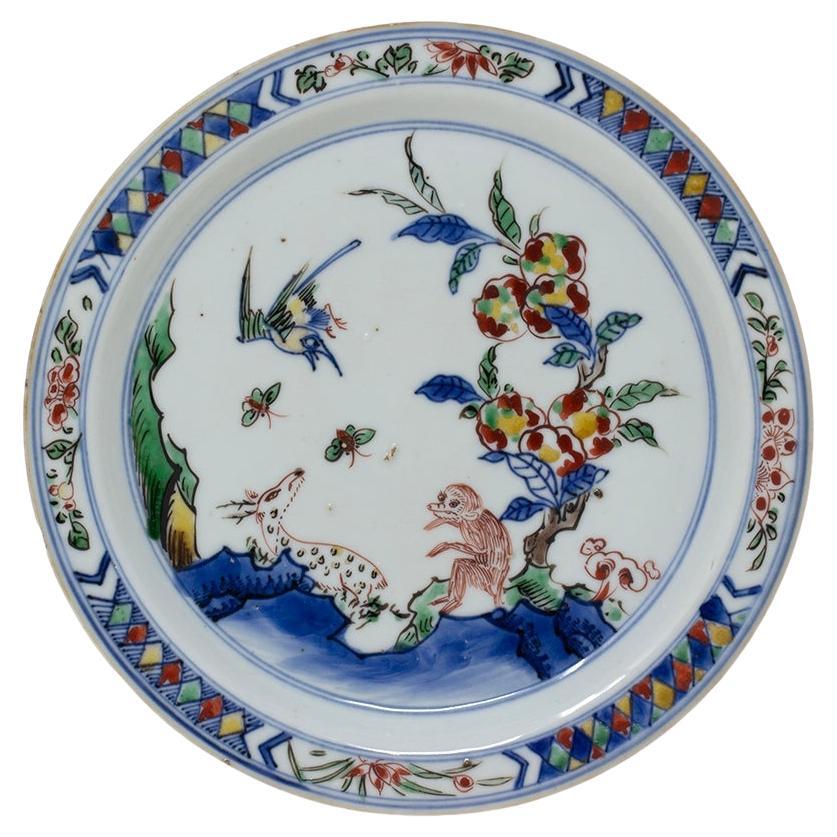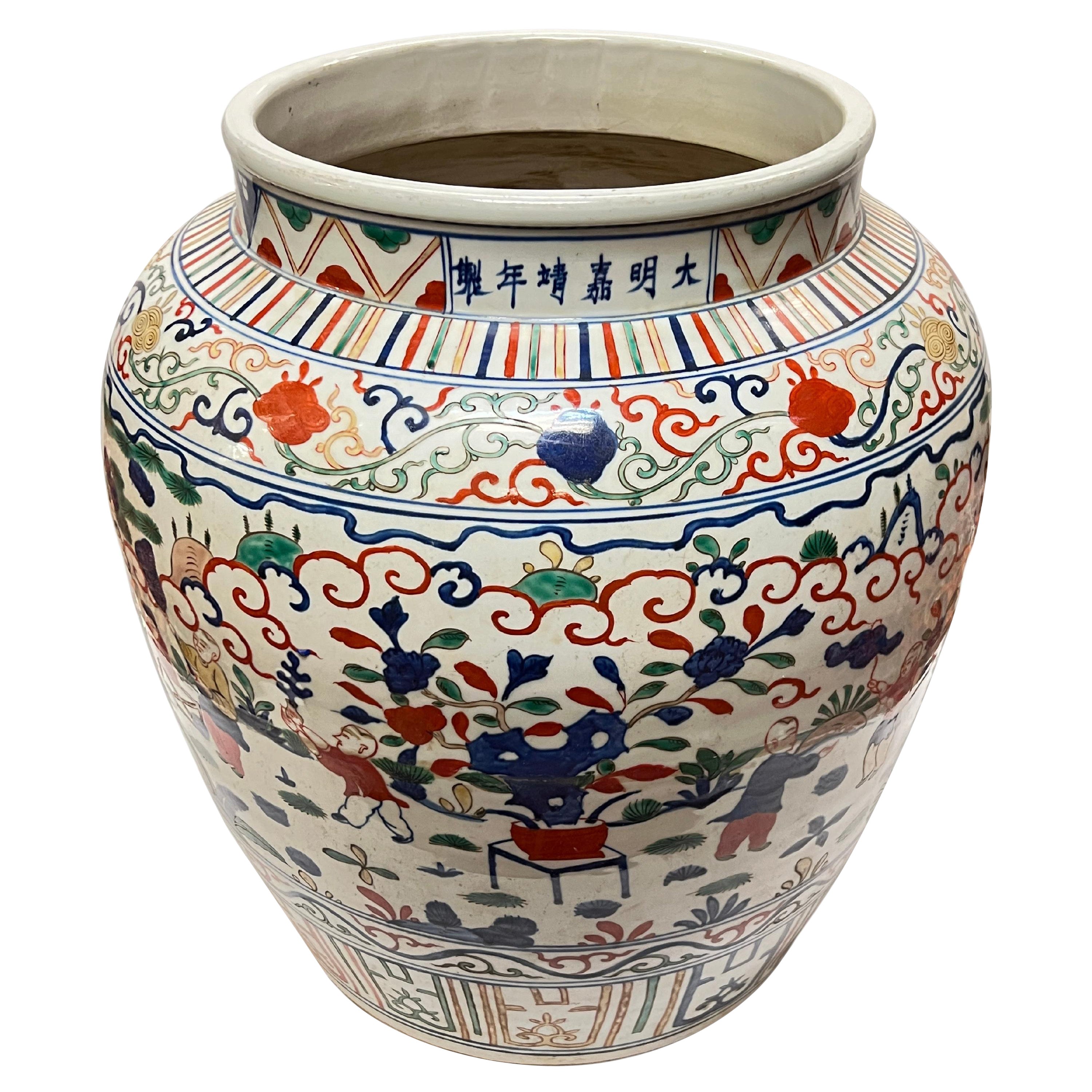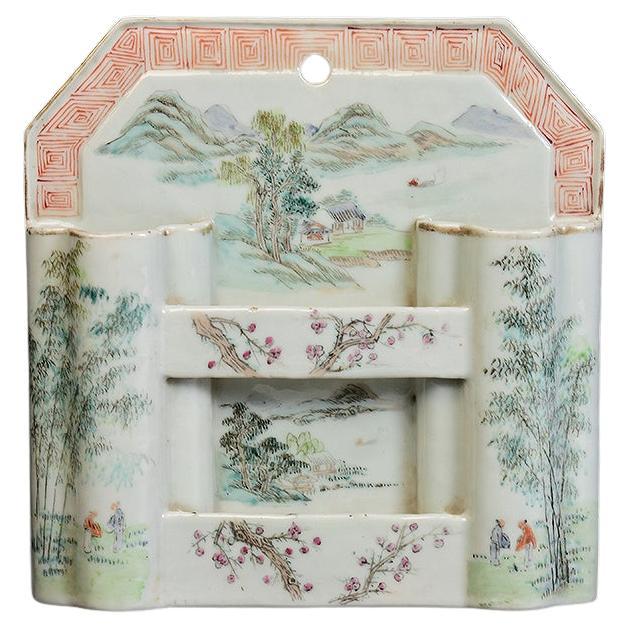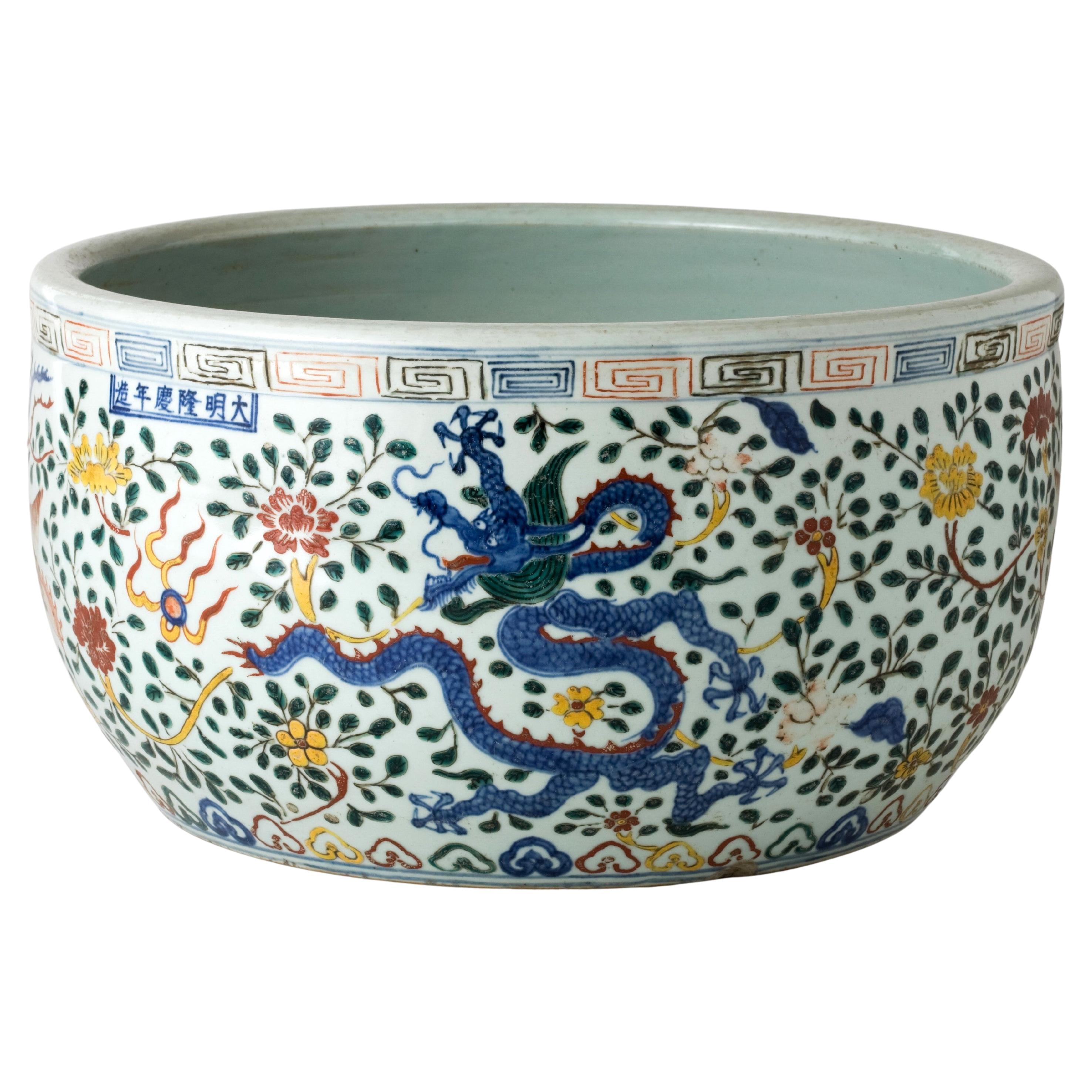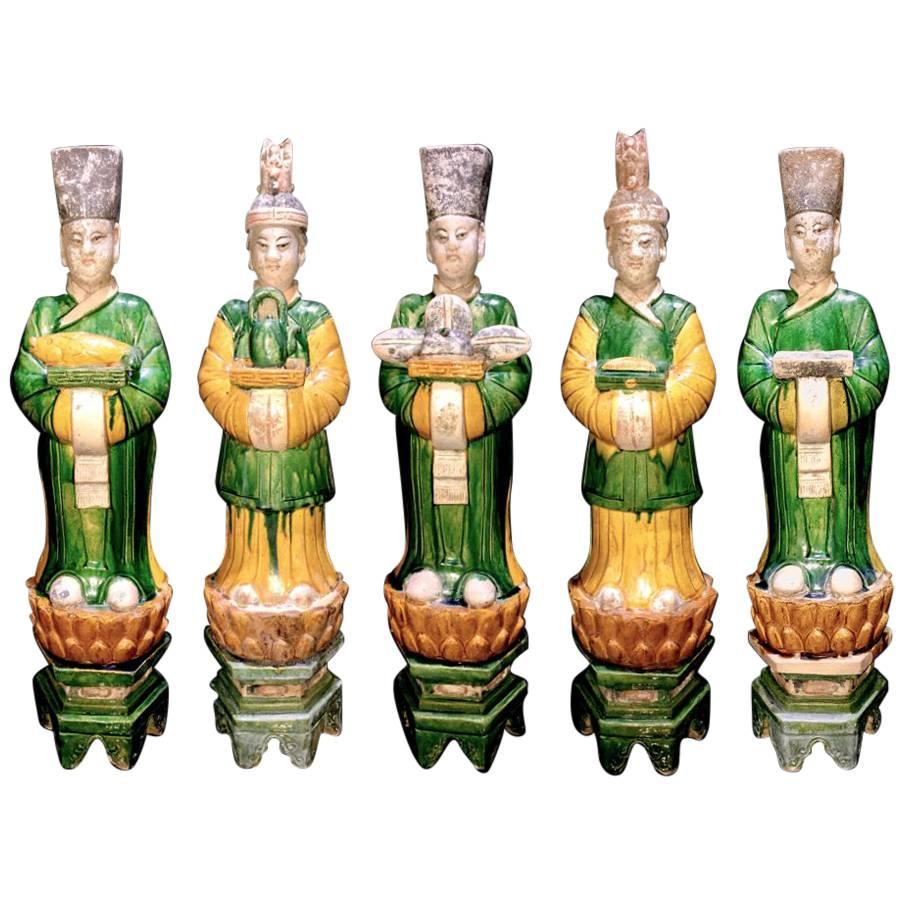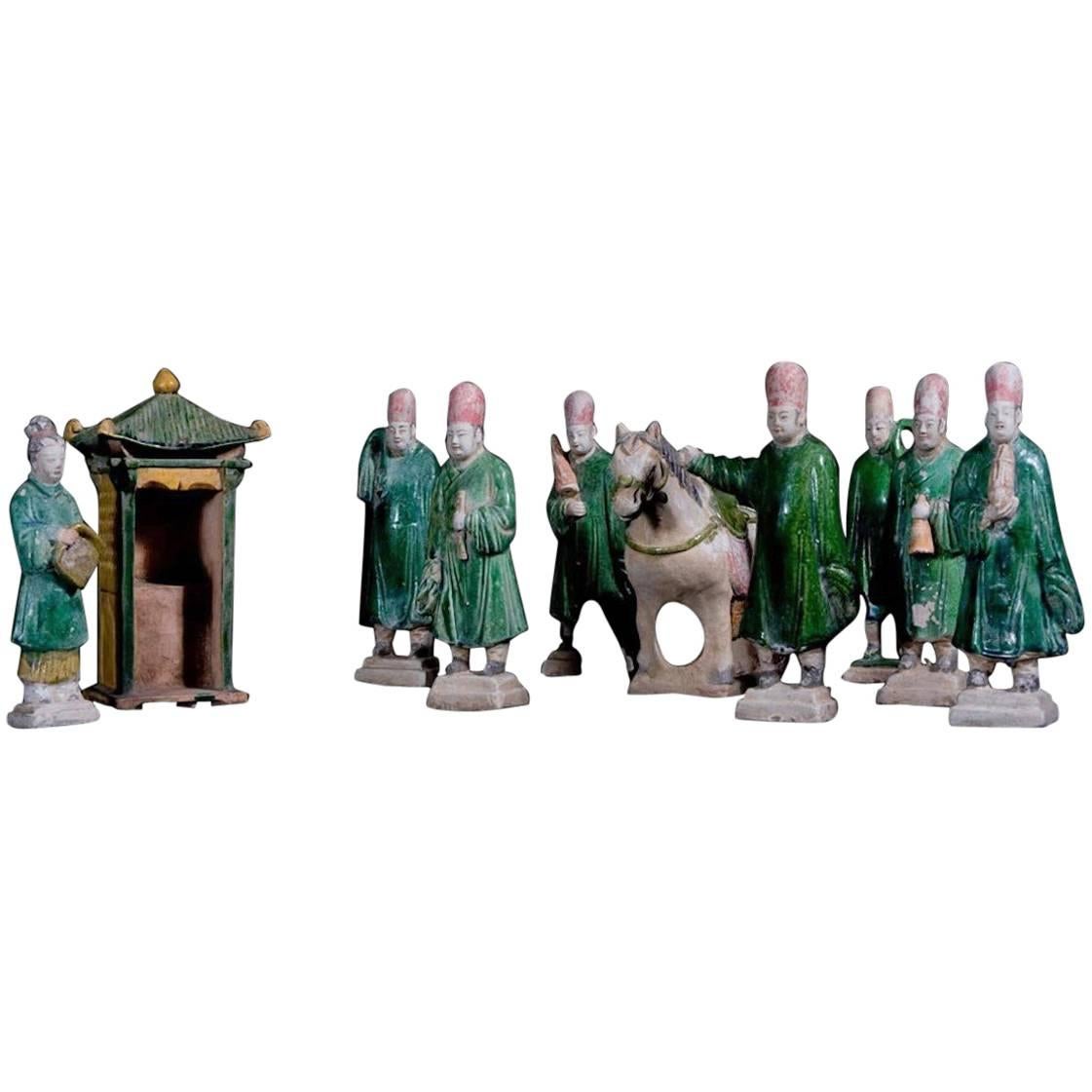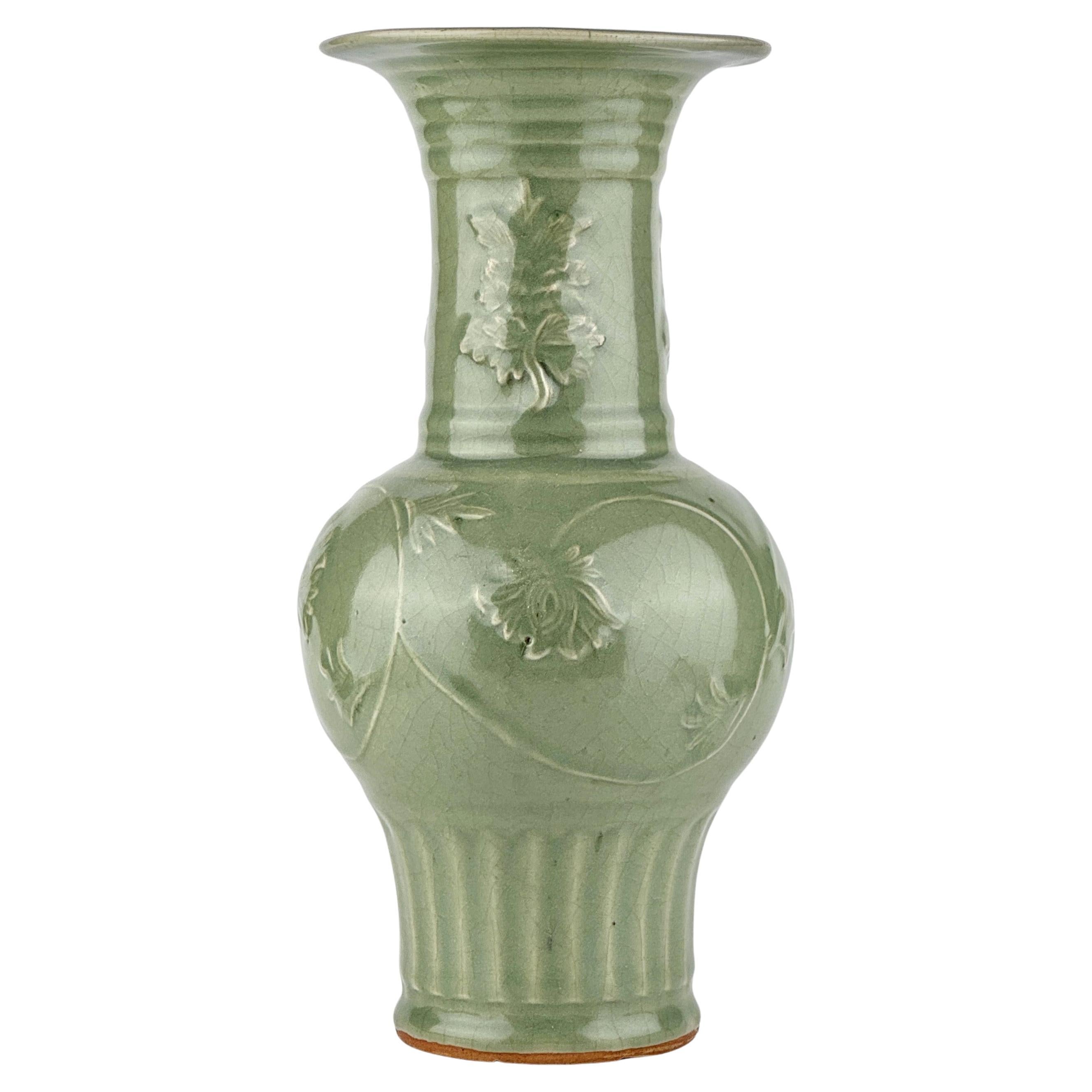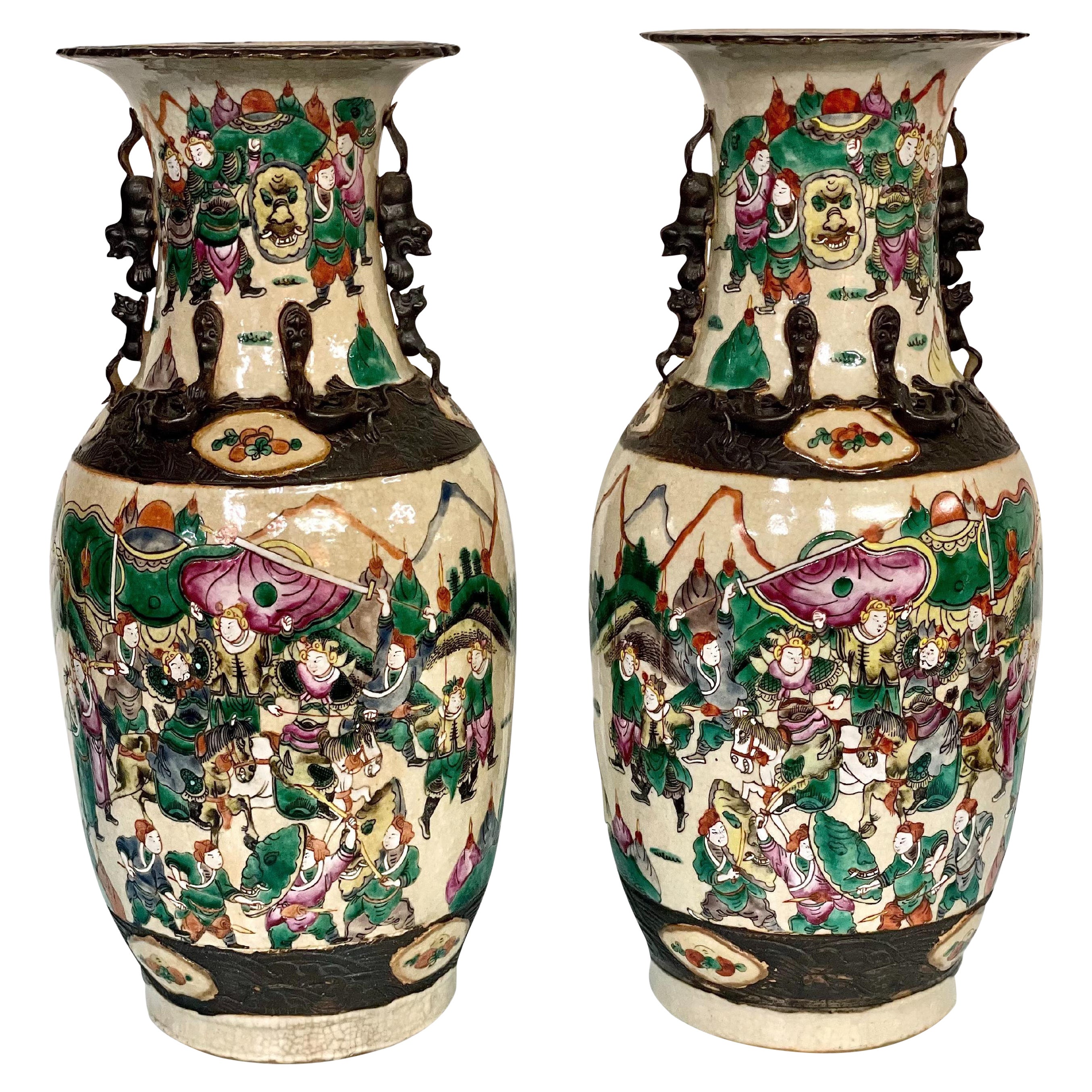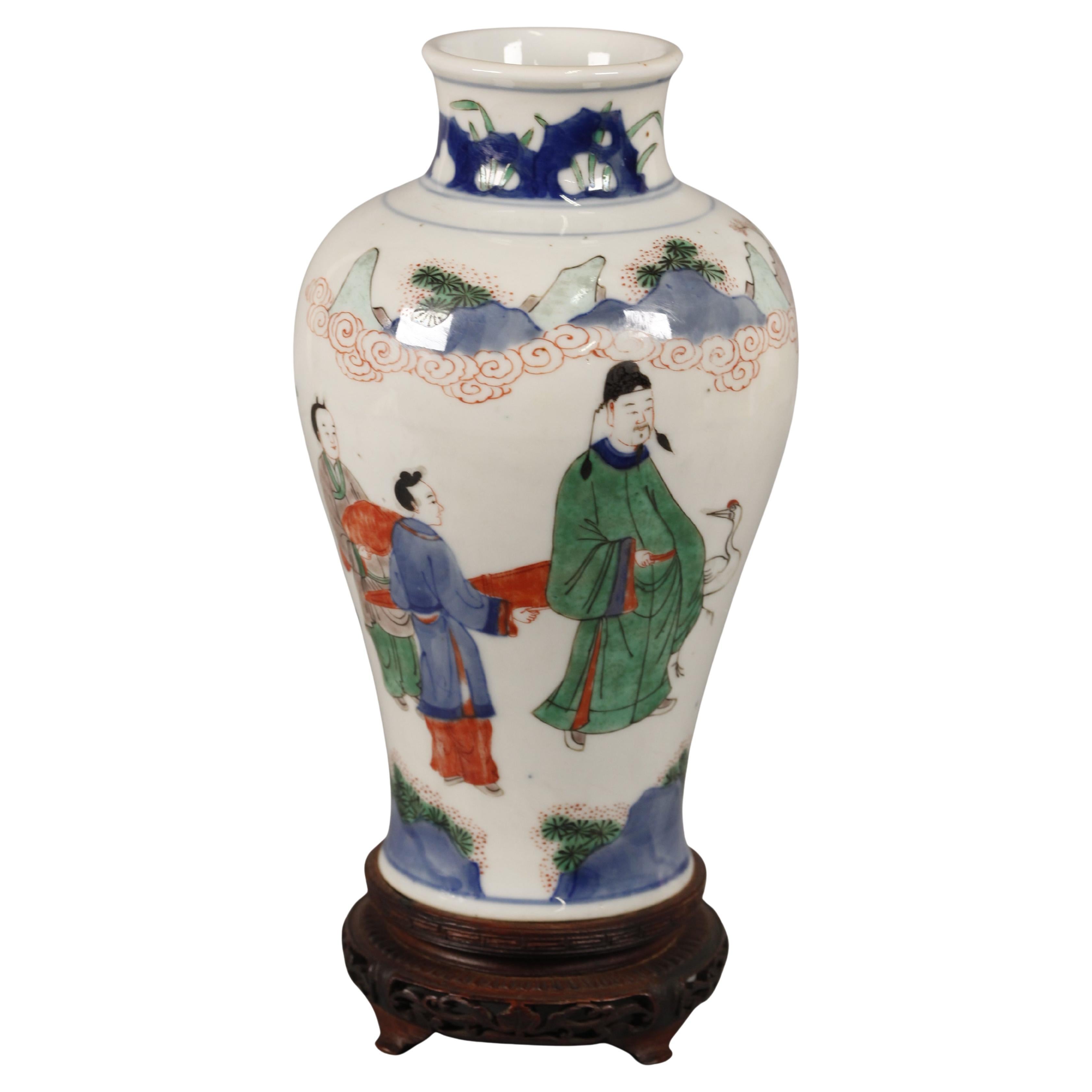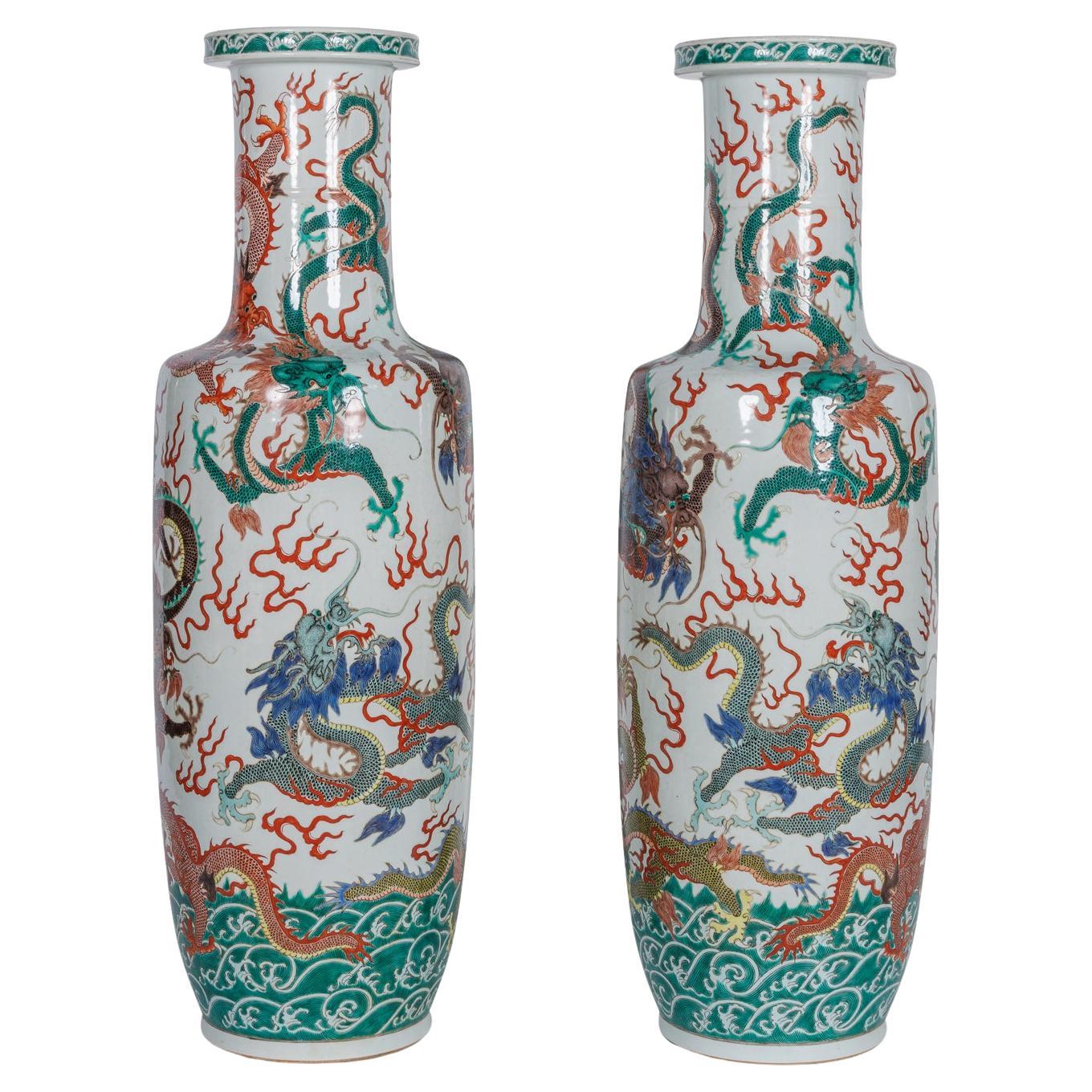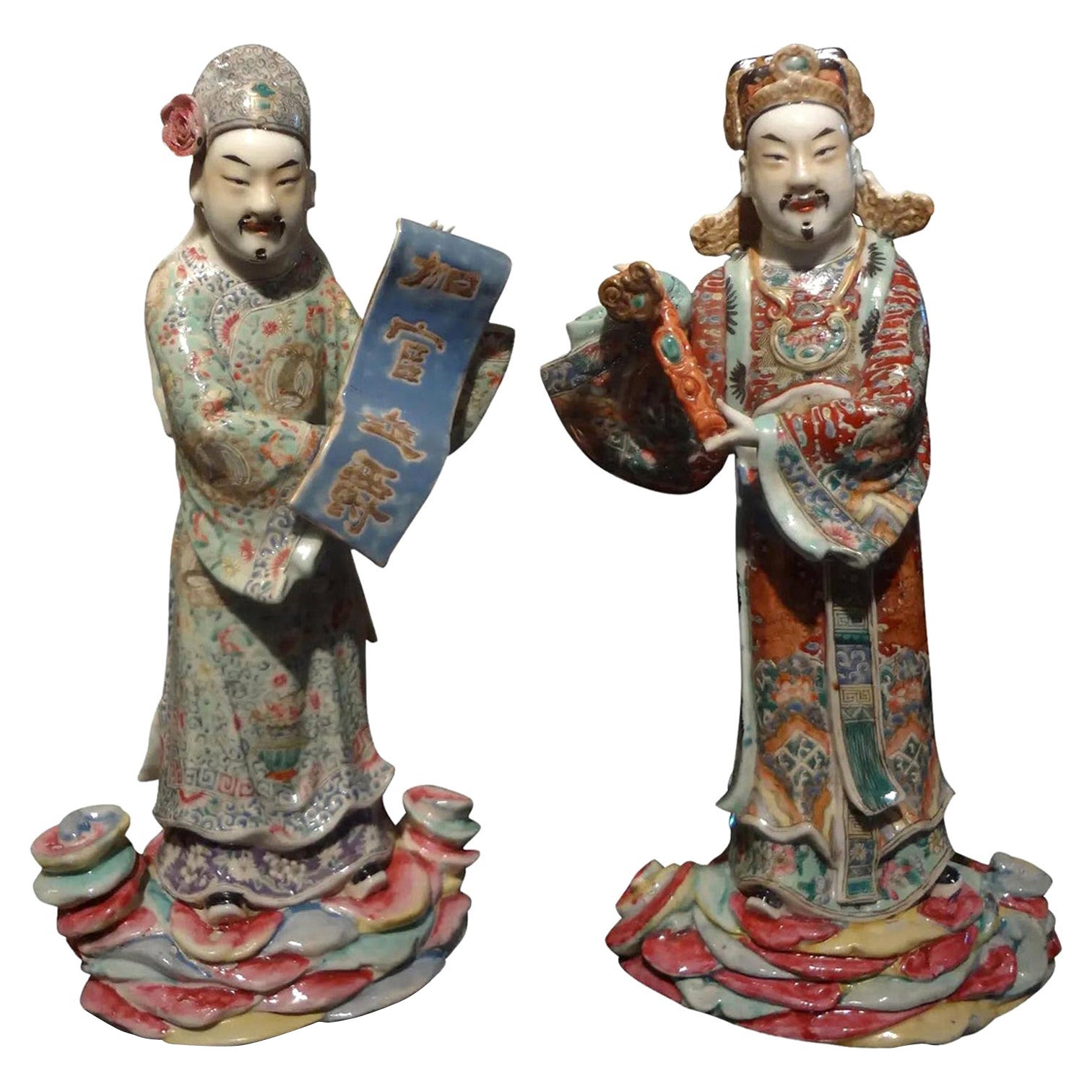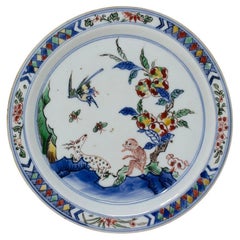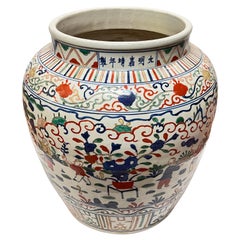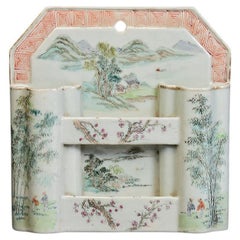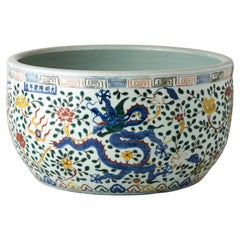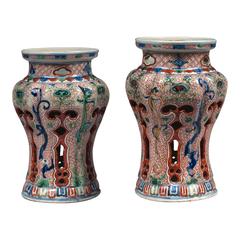
Rare Pair of Ming Dynasty Wucai Porcelain Reticulated Vases
View Similar Items
1 of 2
Rare Pair of Ming Dynasty Wucai Porcelain Reticulated Vases
About the Item
- Dimensions:Height: 6.89 in (17.5 cm)Width: 3.15 in (8 cm)Depth: 3.15 in (8 cm)
- Sold As:Set of 2
- Materials and Techniques:
- Place of Origin:
- Period:Early 17th Century
- Date of Manufacture:Ming Dynasty
- Condition:Wear consistent with age and use. Minor losses. One with a 2 x 0.6 cm chip at the foot, the other with a 1.3 x 0.5 cm chip at the foot. Some wear due to age and use.
- Seller Location:Paris, FR
- Reference Number:1stDibs: LU262937059903
Authenticity Guarantee
In the unlikely event there’s an issue with an item’s authenticity, contact us within 1 year for a full refund. DetailsMoney-Back Guarantee
If your item is not as described, is damaged in transit, or does not arrive, contact us within 7 days for a full refund. Details24-Hour Cancellation
You have a 24-hour grace period in which to reconsider your purchase, with no questions asked.Vetted Professional Sellers
Our world-class sellers must adhere to strict standards for service and quality, maintaining the integrity of our listings.Price-Match Guarantee
If you find that a seller listed the same item for a lower price elsewhere, we’ll match it.Trusted Global Delivery
Our best-in-class carrier network provides specialized shipping options worldwide, including custom delivery.You May Also Like
Chinese Ming Dynasty Ko-Sometsuke Wucai Porcelain Plate
Located in Newark, England
CHONGZHENG 1628-1644
From our Chinese collection, we are delighted to offer this rare example Chinese Ko-Sometsuke Wucai Porcelain Plate. The plate potted in porcelain ceramic of ci...
Category
Antique Early 17th Century Chinese Ming Ceramics
Materials
Ceramic, Porcelain
Large Chinese Wucai Porcelain Jardiniere in Jingjia Ming Dynasty Style
Located in New York, NY
Very large Wucai porcelain jardiniere with scenes of courtiers and children at play in a garden. Signed with the mark of the Jiajing emperor of the Ming dynasty.
Category
20th Century Chinese Ming Ceramics
Materials
Porcelain
19th Century, Qing Dynasty, Rare Antique Chinese Porcelain Letter Holder
Located in Sampantawong, TH
Rare Chinese porcelain letter holder.
Age: China, Qing Dynasty, 19th Century
Size: Height 21.2 C.M. / Width 20.7 C.M.
Condition: Nice glaz...
Category
Antique 19th Century Chinese Antiquities
Materials
Porcelain
A Rare Large Wucai Dragons and Phoenix Jar, Ming dynasty Longqing Emperor
Located in seoul, KR
The blue dragon and the red dragon are depicted in dynamic postures, each extending its claws to grasp a ruyi pearl (如意珠). The phoenix is adorned with flowing feathers and delicate c...
Category
Antique 16th Century Hong Kong Ming Antiquities
Materials
Ceramic
$10,500 Sale Price
30% Off
Superb Set of 5 Elegant Court Attendants, Ming Dynasty, 1368-1644 AD TL Tested
Located in San Pedro Garza Garcia, Nuevo Leon
A stunning set of 5 graceful terracotta figurines from the Ming Dynasty '1368-1644' AD. These elegant attendants are standing on a yellow glazed lotus flower over a high hexagonal green plinth and wear fine robes in matching green and yellow glazes. The unglazed areas have pigmented colors in red, black and white. Each is carrying essential offerings for the royal family. The head is detachable as often seen on the larger figures from this period. Meticulously detailed facial expressions have been hand-painted.
Condition: Mint, finely preserved glaze and pigment, undamaged and no repairs.
Provenance: Ex. Danish Collection.
This set is guaranteed authentic and comes with a Certificate of Authenticity and TL Test from Laboratory Kotalla in Germany (The Oldest Thermoluminescence Testing Laboratory in the World).
Dimensions: Average 54 H cms
Burial figurines of graceful dancers, mystical beasts, and everyday objects reveal both how people in early China approached death and how they lived. Since people viewed the afterlife as an extension of worldly life, these figurines, called mingqi, sometimes referred as “spirit utensils” or “vessels of ghosts” disclose details of routine existence and provide insights into belief systems over a thousand-year period.
The Ming dynasty was the ruling dynasty of China – then known as the Empire of the Great Ming – for 276 years (1368–1644 AD). Founded by Chu Yuan-chang, the rebel leader that was successful in removing the mongols from the throne. Chinese control was re-asserted in China and eastern Asia. Literature became more important, schools were created, and the justice system was reformed. The Ming dynasty is described by some as "one of the greatest eras of orderly government and social stability in human history,” was the last imperial dynasty in China ruled by ethnic Han Chinese.
The practice of burying ceramic objects with the deceased went into decline from the 10th to the 14th Century AD. There was a revival in placing miniature representations of glazed terracotta objects such a furniture, food offerings, horses, miniature statues...
Category
Antique 15th Century and Earlier Chinese Ming Antiquities
Materials
Terracotta
Impressive Terracotta Funerary Procession - Ming Dynasty, China '1368-1644 AD'
Located in San Pedro Garza Garcia, Nuevo Leon
Impressive Funeral Ensamble of 10 Terracotta Glazed Figures in green and caramel colors depicting a votive procession with a palanquin, his four carriers, a horse, a stableman, two musicians, and an offering carrier.
This ensemble is accompanied by a Certificate of Authenticity, and Certificate of Expertise by Jean-Yves Nathan - Specialist in Asian Arts for the CEDEA (The European Confederation of Art Experts).
Burial figurines of graceful dancers, mystical beasts, and everyday objects reveal both how people in early China approached death and how they lived. Since people viewed the afterlife as an extension of worldly life, these figurines, called mingqi, sometimes referred as “spirit utensils” or “vessels of ghosts” disclose details of routine existence and provide insights into belief systems over a thousand-year period.
The Ming dynasty was the ruling dynasty of China – then known as the Empire of the Great Ming – for 276 years (1368–1644 AD). Founded by Chu Yuan-chang, the rebel leader that was successful in removing the mongols from the throne. Chinese control was re-asserted in China and eastern Asia. Literature became more important, schools were created, and the justice system was reformed. The Ming dynasty is described by some as "one of the greatest eras of orderly government and social stability in human history,” was the last imperial dynasty in China ruled by ethnic Han Chinese.
The practice of burying ceramic objects with the deceased went into decline from the 10th to the 14th Century AD. There was a revival in placing miniature representations of glazed terracotta objects such a furniture, food offerings, horses, miniature statues...
Category
Antique 15th Century and Earlier Chinese Ming Antiquities
Materials
Terracotta
Recently Viewed
View AllMore Ways To Browse
Lotus Porcelain Vases
Mushroom Vase
Yellow Dragon Vase
Ming Enamel
Mushroom China
Ming Cobalt
Reticulated Vase
Reticulated China
Pair Of Ming Vases
Porcelain Mushroom
Chinese Hexagonal Vase
Enamel Mushroom
Ming Dragon Vase
Ming Iron
Wucai Porcelain
Wucai Vase
Mushroom Stools Stone Or Cement
Antique Bronze Or Brass Side Table
